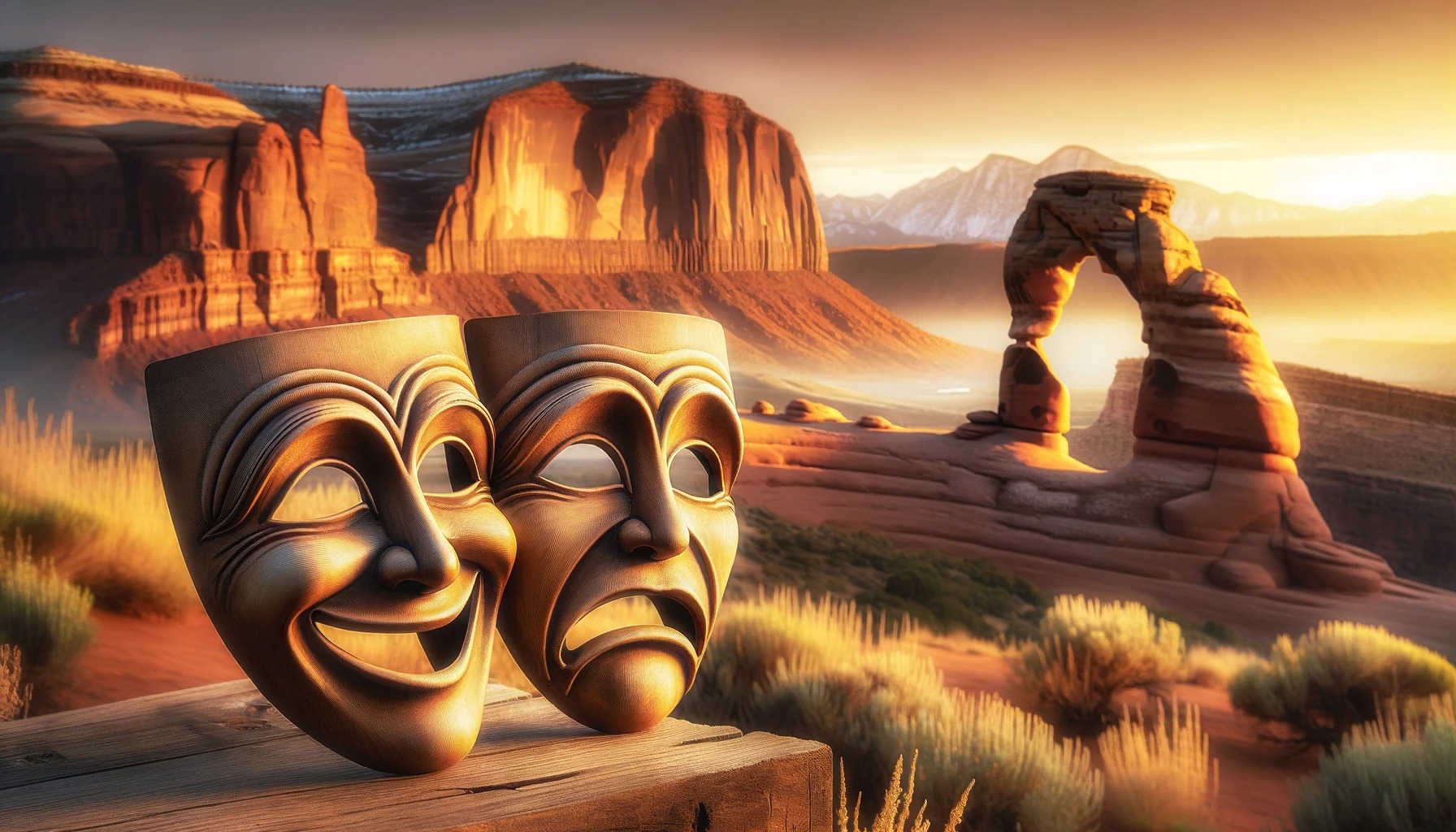SALT LAKE CITY — It takes lots of guts to be a stand-up comic, and I think that might go double for comics working in Utah, where I would imagine audiences are pretty varied and unpredictable in their tolerance for content. Fortunately for local comics Spencer Riley, Nami Eskandarian, Nicholas Don Smith, and Sam D’Antuono, their sparse opening-day Salt Lake City Fringe audience greeted their acts with good-hearted enthusiasm.
Collectively called “How Did We Get Here,” this one-hour collection of stand up sets opens with Riley, whose act seemed to have the strongest connection to the title. He shares about his experiences as an autistic comic encountering some upset audience members after show. Eskandarian follows with an elaborate exploration of the history of a video game series in “The Story of Tekken.” D’Antuono is up next with the story of a cheating girlfriend, and the show concludes with Smith’s reflections on his relationship with his mother, centering around her final days battling Alzheimer’s.
“The Story of Tekken” stood out to me—in part due to effective use of visual aids, but also in terms of content. It had the loosest connection to the title of the overall show, with little reference to Eskandarian’s life and more focus on that of the bizarre lives of the characters in the game. Eskandarian is enthusiastic in his love for the absurdities of the plot of Tekken, and the bizarre plot of the video game series itself lends itself well to stand-up. You half expect Stefan to come out mid act.
“This video game has everything. Un-dead devils. A bear with a crush on a panda. And you know that thing where Velociraptors with boxing gloves make great step-fathers?”
I’d like to see Eskandarian perhaps spend a bit of time on his own connection to the material, which hopefully doesn’t extend to being chucked off a cliff at any point of his life, but the piece is fairly effective and the audience enjoyed it throughout.
The other acts seemed more directly tied to the title of the show with more personal stories. Riley’s set seemed the most refined and practiced and he warmed up the crowd well. D’Antuono and Smith both used notes during my performance, which didn’t interfere with their flow, but did suggest that their pieces are still being workshopped and adjusted. Each has moments that landed well, though some of the content left me wondering at that fine line between laughing to survive and process traumatic experiences and laughter to dismiss traumatic experiences. There were some moments in each act played as comedy that seemed to make audiences more uncomfortable or unsure about whether or not it was okay to laugh. Still, these are acts largely in process, and comedy in front of a small house is brutal. It’s possible with larger audiences some of those moments would have played better.
It is worth noting that this show is tagged on the Fringe page with “women and marginalized genders,” which feels like a bit of a stretch in terms of the actual content of each piece. It could be intended to reflect the artists themselves, but the experiences of women and/or marginalized genders were not openly discussed in any of the acts. Fringe festivals are designed to be a haven for shows that are in-progress. If you’re up for some crass comedy that’s a bit rough around the edges but still a good time, you can catch “How Did We Get Here?”
[box] How Did We Get Here is part of the Great Salt Lake Fringe Festival, which is playing through August 4, 2023, at various times at the Alliance Theatre (602 East 500 South, A103, the Annex, Salt Lake City). Tickets are $15. For more information, visit greatsaltlakefringe.org. [/box]

